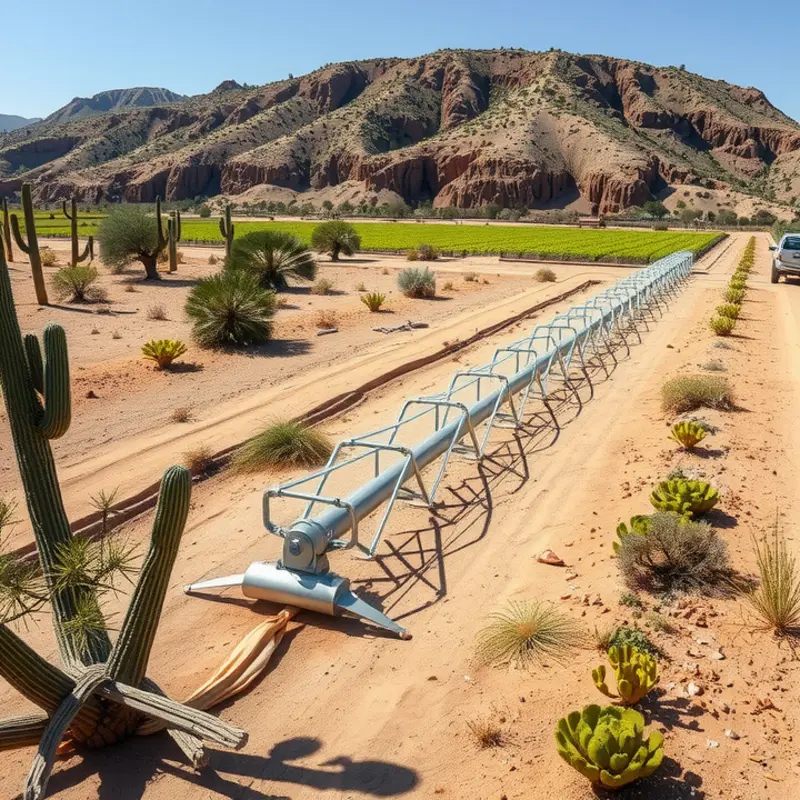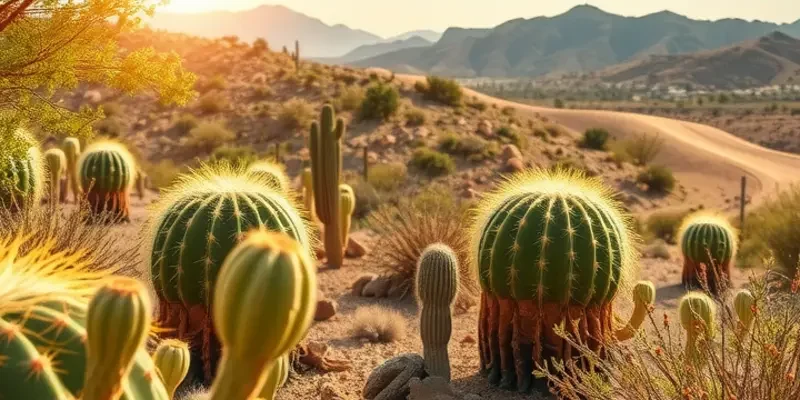Desert environments, often viewed as barren and inhospitable, are home to unique culinary traditions that reflect the harmony between culture and nature. As food enthusiasts and culturally-curious individuals, understanding the delicate balance of desert ecosystems and how these regions preserve their tantalizing food heritage is essential. This exploration reveals the profound roots of culinary practices deeply intertwined with environmental preservation, offering a flavorful journey through the heart of these enchanting landscapes.
A Culinary Oasis: Traditional Dishes and Local Ingredients

The vast deserts of our world often conceal treasures hidden beneath their sandy surfaces. These arid regions are home to diverse cultures that have mastered the art of adapting local ingredients to create culinary masterpieces. Each dish tells a story of resilience, creativity, and a profound connection to the land.
In the deserts of North Africa, couscous reigns supreme. This humble grain, made from semolina wheat, forms the heart of many meals. Combined with seasonal vegetables and an array of spices like cumin and coriander, couscous becomes a canvas that showcases the rich tapestry of Berber cuisine. Its preparation involves steaming the grains to achieve the perfect light and fluffy texture, a technique passed down through generations.
Traveling east, the Arabian Peninsula offers a different palette yet equally rich in tradition. Here, the date palm is revered not only for its sweet fruits but also for its versatility. Dates are consumed fresh, dried, or transformed into syrup. A popular treat is harees, a savory dish made from wheat and meat, slow-cooked to a porridge-like consistency. Spiced with cardamom and cinnamon, it reflects the resourceful use of limited ingredients prevalent in desert environments.
Further afield in Mexico’s Sonoran Desert, the prickly pear cactus or nopal represents a staple. Its pads are sliced, grilled, and incorporated into salads or scrambled with eggs. This practice not only uses what is abundantly available but also highlights the nutritional richness of indigenous plants that have supported life for centuries. The People of the Sonoran Desert have mastered such culinary methods to turn harsh living conditions into opportunities for creation and sustenance.
Despite diverse geography, these culinary traditions share a common thread: they celebrate local ingredients while respecting environmental constraints. For instance, the use of spices in small quantities not only enhances flavor without overshadowing key ingredients but also illustrates a sustainable approach that minimizes waste and optimizes flavor. Many desert communities implement practices found in eco-smart kitchen designs, focusing on reducing resource consumption and preserving food supplies.
The ingenuity of desert cuisines lies not just in the dishes they produce but also in resource management. Region-specific agricultural techniques and eco-friendly preservation methods ensure that every morsel is savored and destined to please the palate while honoring Earth’s gifts. Through these efforts, communities maintain a culinary heritage that sustains both people and land alike, adapting age-old wisdom to preserve the delicate balance of these fragile ecosystems.
Sustainable Practices: Protecting Desert Ecosystems for Future Generations

In the heart of arid landscapes, a movement is budding, focused on safeguarding and rejuvenating desert ecosystems. These efforts not only protect biodiversity but enhance culinary traditions rooted in the desert. Innovative sustainable farming techniques are at the forefront of this initiative. Desert farming embraces permaculture, utilizing designs that mimic natural ecosystems. By creating self-sustaining agricultural systems, communities grow crops resiliently resistant to harsh conditions, minimizing environmental impact.
Water conservation is critical in these endeavors. Harnessing ancient practices like rooftop rainwater harvesting and modern drip irrigation systems conserves precious water resources. Drip irrigation reduces water waste by delivering moisture directly to plants’ roots, boosting efficiency and reducing evaporation. This approach supports food production while conserving desert habitats.
Another practice gaining traction is agroforestry, which integrates trees, crops, and animals within the same system. By incorporating native plant species, farmers restore soil quality and reduce erosion. These biodiverse systems support natural pest control while providing a variety of food sources. The reintroduction of traditional desert crops, such as millet and quinoa, is increasingly popular. These nutrient-rich grains withstand extreme conditions, reinforcing food security and offering unique culinary possibilities.
Community initiatives play a crucial role in fostering knowledge of these sustainable practices. Local workshops and educational programs teach young generations about biodiversity importance and resource management. By preserving traditional knowledge and encouraging innovative methods, these initiatives secure ecosystems and cultural heritage for the future.
Food enthusiasts can significantly influence the preservation of desert ecosystems by actively engaging with local producers. Supporting farmers who implement eco-friendly methods ensures the continuation of these efforts. Individuals can also embrace sustainable desert cuisines by incorporating traditional ingredients into their meals. Emphasizing local, seasonal ingredients reduces environmental footprint and highlights the rich flavors inherent in desert foods.
Integrating these sustainable practices into everyday life also aligns with broader eco-friendly approaches. For instance, reducing kitchen waste through mindful consumption parallels sustainable cooking and storage practices. Such efforts contribute to an overarching strategy of environmental stewardship extending beyond desert boundaries.
By supporting sustainable practices, individuals contribute to protecting desert ecosystems while celebrating diverse culinary traditions. The harmonious symbiosis between culture and ecology paves the path for future generations to savor the unique offerings of the desert, ensuring these landscapes remain teeming with life and flavor.
Final words
The art of preserving desert ecosystems is as vital as the culinary traditions they support. By understanding and appreciating these unique food cultures, we can foster a deeper respect for the ecological systems they emerge from. As food enthusiasts and cultural explorers, embracing sustainable practices allows us to celebrate and protect these rich legacies for future generations. When we savor a dish inspired by desert traditions, we participate in a larger narrative of ecological awareness and respect. Let’s continue this journey together, cherishing the flavors while preserving the landscapes that nurture them.








